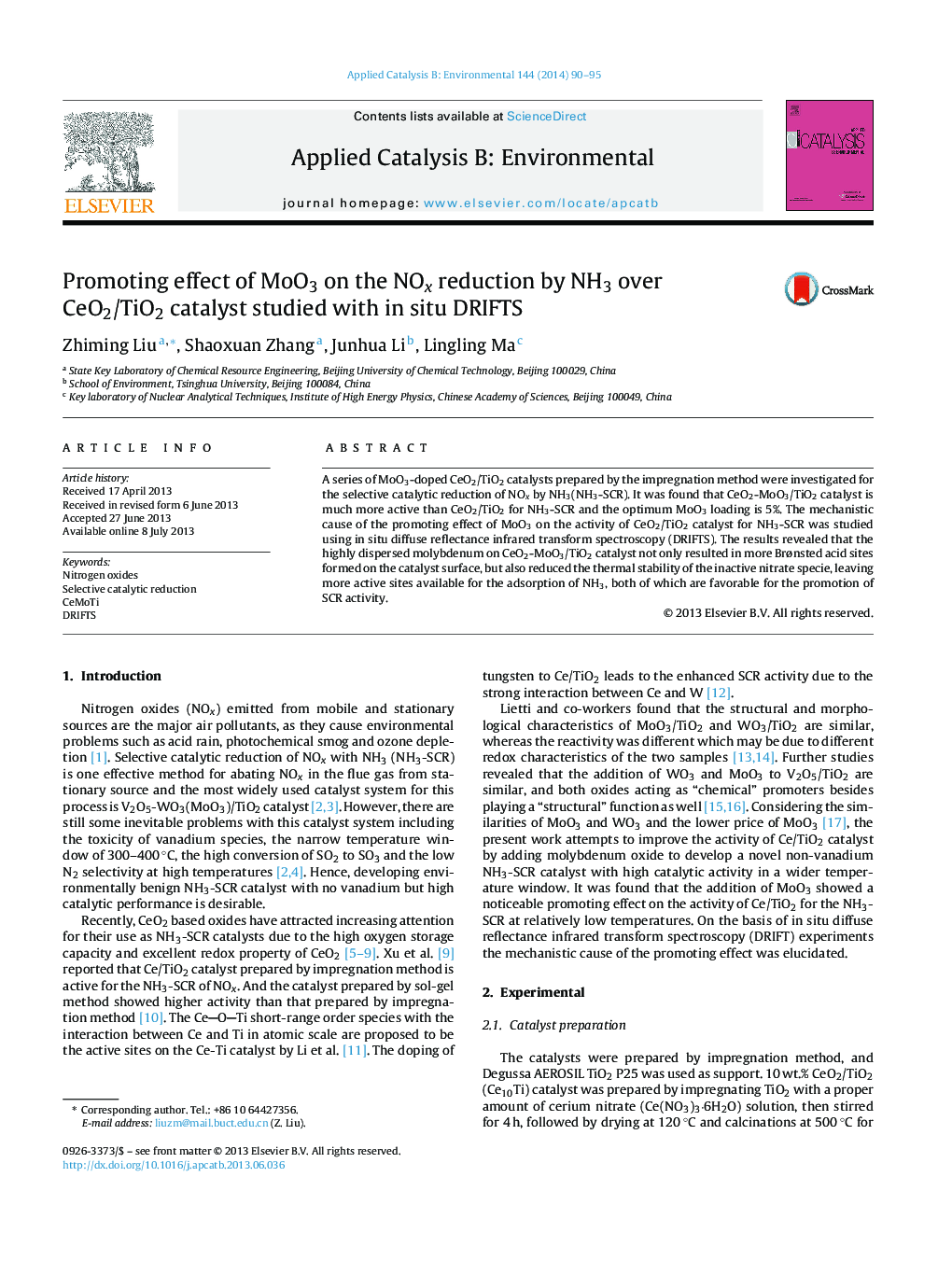| Article ID | Journal | Published Year | Pages | File Type |
|---|---|---|---|---|
| 45339 | Applied Catalysis B: Environmental | 2014 | 6 Pages |
•CeO2-MoO3/TiO2 catalyst is much more active than CeO2/TiO2 for the NH3-SCR.•The existed MoO3 can prevent the formation of inactive nitrate species.•More Brønsted acid sites formed on the catalyst surface due to the presence of Mo.•The activated NHx species react with NO or adsorbed NO2.
A series of MoO3-doped CeO2/TiO2 catalysts prepared by the impregnation method were investigated for the selective catalytic reduction of NOx by NH3(NH3-SCR). It was found that CeO2-MoO3/TiO2 catalyst is much more active than CeO2/TiO2 for NH3-SCR and the optimum MoO3 loading is 5%. The mechanistic cause of the promoting effect of MoO3 on the activity of CeO2/TiO2 catalyst for NH3-SCR was studied using in situ diffuse reflectance infrared transform spectroscopy (DRIFTS). The results revealed that the highly dispersed molybdenum on CeO2-MoO3/TiO2 catalyst not only resulted in more Brønsted acid sites formed on the catalyst surface, but also reduced the thermal stability of the inactive nitrate specie, leaving more active sites available for the adsorption of NH3, both of which are favorable for the promotion of SCR activity.
Graphical abstractFigure optionsDownload full-size imageDownload as PowerPoint slide
